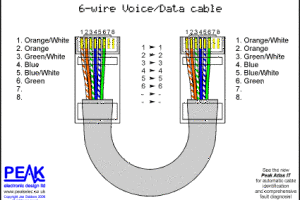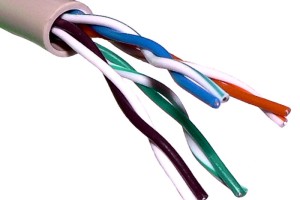Cat5, Cat5e, Cat6 Cables
If you’re new to the topic, the processes and materials of structured cabling can seem daunting and, of course, seeking the right professional is key. However, if you want some basic knowledge to inform decisions about the cabling in your business or home, it makes the most sense to start with the building blocks: cables. If you are installing a new LAN (local area network) or even just doing upkeep on an existing network, it will serve you to do a bit of cable research. As stated previously, a trusted cabling professional can help you make the best decision for your particular network, and while more modern and well made cables will cost more than the lesser, it will generally serve you to go with newer technologies that will be compatible with future innovations for the longest. Whether your network requires the transfer of information via voice, video and/or ethernet, it is beneficial to have a good grip on the advantages of several different cable types. The cables examined below have been standardized and differentiated by TIA/EIA-568, which has been responsible for the standardization of data cabling since the mid-1990s. These are the network cables most popularly in use today.
Cat5-(Category 5) This is a twisted pair cable designed to carry information in signal form from one end to the other. Because of the twisted pair design, the internal wires are able to move data with a limited amount of interruption or ‘noise’ and therefore usually do not need any shielding from external interference. This is the most commonly used Ethernet cable, but can also carry multi-line telephone and video streams.
Cat5e- (Category 5 enhanced) This cable superseded the cat5 cable in performance. Both are twisted pair cables, and both have the same bandwidth. The main difference between the two is that the cat 5e has tighter crosstalk settings. In layman’s terms, this means a decrease in the amount of signal bleed between cables, thus keeping information speed and clarity peak.
Cat6 – (Category 6) Hardware-compatible with the cat5 and cat5e cable, this cable has an even stricter approach to crosstalk and the reduction of external frequencies. [These differences in crosstalk reduction may seem small, but they can make a huge difference in your day-to-day network usage.]
Cat6a- (Category 6 augmented) As of 1998 this was the most advanced cabling recognized by TIA/EIA-568. This cable also marks the beginning in a shift in connecting physical hardware, requiring a hard-patch to make is compatible with an existing Cat cable network system. Performing at a differing frequency of alien noise reduction, a Cat6a cable exhibits around a fifty percent reduction in crosstalk over other Cat cables.
While what cable you end up using will be dependent upon the size and complexity of network you require, the clearer a stream of dependable information you can get, the better and faster you can get work accomplished. With the advice of s structured cabling technician and a bit of research, you can make an informed choice about structured cable.




